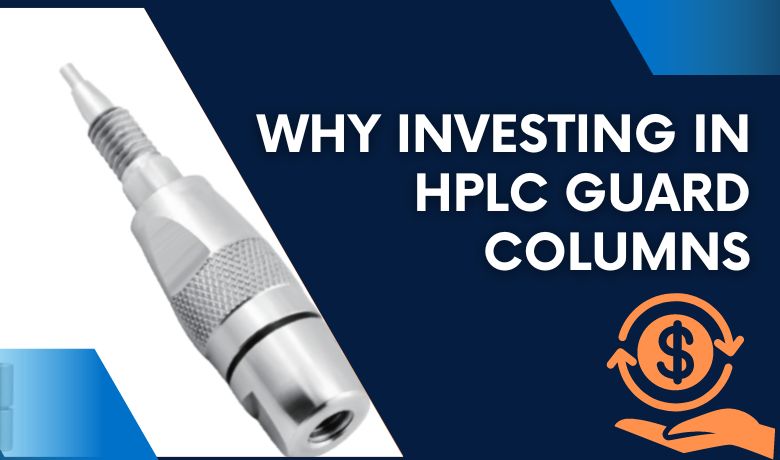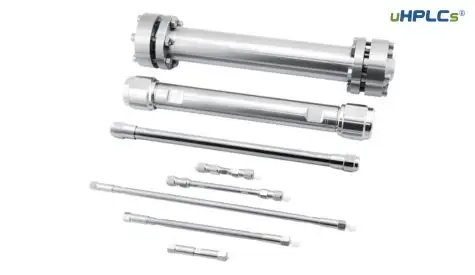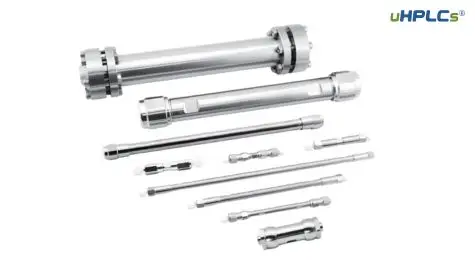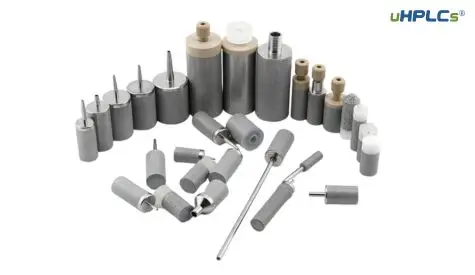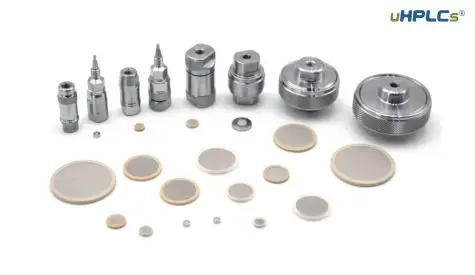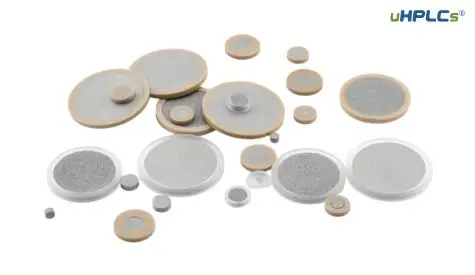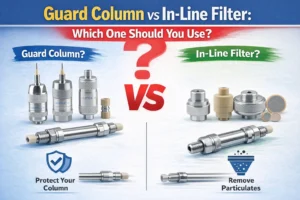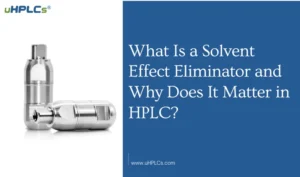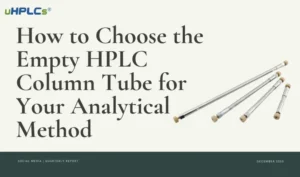Investing in High-Performance Liquid Chromatography (HPLC) guard columns can lead to significant long-term cost savings for laboratories and manufacturing facilities. This is primarily due to their role in enhancing the efficiency, accuracy, and longevity of HPLC systems.
Overview of HPLC Technology
High-Performance Liquid Chromatography (HPLC) is a sophisticated analytical technique used to separate, identify, and quantify components in a mixture. It is widely utilized across various industries, including pharmaceuticals, biotechnology, environmental analysis, and food safety, due to its ability to provide precise and reliable results.
HPLC operates by pumping a liquid sample through a column packed with solid particles (the stationary phase), allowing different components to separate based on their interactions with the stationary phase and the mobile phase used in the process.
1. Understanding HPLC Guard Columns
Definition and Description
HPLC guard columns are protective columns installed between the sample injector and the analytical column in a High-Performance Liquid Chromatography (HPLC) system. Their primary purpose is to safeguard the analytical column from contaminants such as particulate matter and highly retained compounds that could compromise its performance and lifespan. Typically, guard columns are shorter than analytical columns, often around 2 cm in length and 4.6 mm in internal diameter, and they are packed with larger resin particles (approximately 40 μm) to minimize back pressure while effectively trapping impurities.
Differences from Analytical Columns
While both guard columns and analytical columns serve to separate components in a mixture, they differ in their roles and construction:
- Function: Guard columns act as a first line of defense against contaminants, protecting the analytical column from damage and fouling. In contrast, analytical columns are designed for the actual separation and analysis of the sample components.
- Construction: Guard columns are typically packed with larger particles, which allows them to trap contaminants without significantly affecting the flow or separation efficiency. Analytical columns, however, are packed with smaller particles that provide higher resolution for the separation of analytes
- Cost: Guard columns are generally less expensive than analytical columns, making them a cost-effective solution for prolonging the life of the more costly analytical columns they protect
Types of Guard Columns and Their Applications
HPLC guard columns come in various types, each suited for specific applications:
- Cartridge-Type Guard Columns: These are modular and easy to replace, making them suitable for samples with high concentrations of contaminants. They are designed for frequent replacement and can be used in both stainless steel and PEEK housings.
Packed Guard Columns: These columns are packed under high pressure and are used for samples that may not require frequent replacement. They are designed to maintain the performance of the analytical column over a longer period
Mini Guard Columns: These are shorter versions of packed guard columns, often used in applications where space is limited or for specific analyses that require less volume
Specialized Guard Columns: Certain guard columns are designed for specific applications, such as those that require low-cost solutions or those that utilize unique packing materials (e.g., monolithic silica gel) to prevent clogging and allow for visual confirmation of dirt accumulation.
2. Cost Implications of Using HPLC Guard Columns
Initial Costs vs. Long-Term Savings
While there is an upfront cost associated with purchasing HPLC guard columns, the long-term savings they provide often outweigh this initial investment. Guard columns typically cost significantly less than analytical columns, with an average cost of around $80 per column. However, by protecting the analytical column and extending its lifespan, guard columns can lead to substantial savings over time by reducing the frequency of expensive column replacements.
Case Studies and Examples of Cost Savings
1.Pharmaceutical Industry:
In the pharmaceutical industry, samples often contain excipients or degradation products that can foul the analytical column. By implementing guard columns, pharmaceutical companies can ensure the purity and effectiveness of their analyses while reducing the need for frequent column replacements.
2.Environmental Testing:
Environmental samples collected from contaminated sites may contain high levels of particulates or complex matrices. Guard columns help protect the analytical column from these interferences, ensuring accurate detection of environmental pollutants and reducing the costs associated with column maintenance.
3.Food and Beverage Analysis:
Complex food matrices can contain various interfering components that may damage the analytical column. Using guard columns helps maintain column performance and facilitates reliable analysis of food additives, contaminants, and other components, leading to cost savings in the long run.
Economic Impact of Reduced Column Replacements
The economic impact of reduced column replacements due to the use of guard columns is significant. Analytical columns represent a substantial investment, with costs ranging from hundreds to thousands of dollars per column. By extending the lifespan of these columns, guard columns can save laboratories substantial amounts of money over time. For example, if a laboratory uses an average of one analytical column per month, the use of guard columns could potentially save them the cost of 12 or more column replacements per year.
3. Performance and Protection
How Guard Columns Protect Analytical Columns
Guard columns protect analytical columns by trapping particulate matter and chemical contaminants before they reach the main column. Particulate matter, such as microscopic particles in samples or mobile phases, can clog the frit of the analytical column, hindering flow and reducing separation efficiency. Guard columns, with their larger pore size, effectively trap these particles.
Chemical contaminants, such as impurities not related to the target analytes, can irreversibly bind to the stationary phase of the analytical column, altering its selectivity and reducing its effectiveness. Guard columns, packed with similar material to the analytical column, attract and retain these contaminants, preventing them from affecting the analytical separation.
Impact on Column Lifetime and Performance
By shielding the analytical column from harmful contaminants, guard columns significantly extend its lifespan. This translates to fewer column replacements, reduced maintenance costs, and more consistent chromatographic performance over time.
Guard columns also contribute to improved chromatographic efficiency and resolution by ensuring a cleaner and more consistent analytical environment. By preventing contaminants from reaching the analytical column, guard columns help maintain the integrity of the stationary phase, leading to sharper peaks, better resolution, and more reliable results
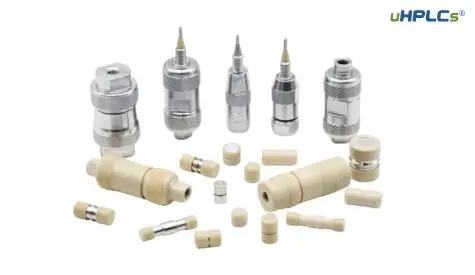
4: Maintenance and Efficiency
Maintenance Requirements for Guard Columns
Guard columns typically require less maintenance compared to analytical columns. They are designed to be easily replaceable or regenerable, making the maintenance process more straightforward and less time-consuming.
Some guard columns are disposable and meant to be replaced when they become saturated with contaminants, while others can be regenerated or cleaned, providing a cost-effective option for long-term use. The frequency of replacement or regeneration depends on factors such as the nature of the samples, the presence of highly retained compounds, and the number of injections.
Reduced Downtime and Increased Lab Efficiency
By minimizing the need for frequent column replacements and reducing the time spent on maintenance, guard columns contribute to reduced downtime and increased laboratory efficiency. This translates to more consistent workflows, improved productivity, and the ability to meet deadlines more effectively.
Guard columns also help maintain the performance of the analytical column, reducing the need for repeated tests and rework. This saves both time and resources, further enhancing the efficiency of the laboratory
5: Return on Investment (ROI)
Calculating ROI
To calculate the ROI of investing in HPLC guard columns, consider the following factors:
- Initial cost of guard columns
- Frequency of analytical column replacements with and without guard columns
- Cost of analytical column replacements
- Potential savings from reduced maintenance and downtime
By comparing the costs associated with using guard columns to the savings generated from extended analytical column lifespan and improved efficiency, you can determine the ROI of your investment.
Comparative Analysis with and without Guard Columns
A comparative analysis of scenarios with and without the use of guard columns can help illustrate the potential savings and benefits. Consider the following example:Without guard columns:
- Analytical column lifespan: 6 months
- Cost of analytical column: $1,000
- Annual cost of analytical column replacements: $2,000
With guard columns:
- Analytical column lifespan: 12 months
- Cost of guard columns: $80 per column
- Annual cost of guard columns: $960 (assuming replacement every month)
- Annual cost of analytical column replacements: $1,000
In this scenario, using guard columns results in a 50% reduction in analytical column replacement costs, from $2,000 to $1,000 per year. While the annual cost of guard columns is $960, the overall savings of $1,040 per year outweigh this expense, demonstrating a positive ROI.
Conclusion
Investing in HPLC guard columns is not just a choice but a strategic decision that ensures the longevity and efficiency of your chromatographic systems. By safeguarding your analytical columns from potential contaminants, guard columns extend the lifespan of your equipment, reduce maintenance costs, and enhance overall lab performance. Remember, the initial investment in these protective components pays dividends in the form of reduced operational disruptions and lower long-term expenses. It’s an essential step for any lab aiming to optimize their HPLC operations and ensure consistent, reliable results.
Are you ready to enhance the efficiency and longevity of your HPLC systems?
To learn more about our HPLC guard columns and find the perfect fit for your laboratory needs, contact us today.
Our team at HENGKO is dedicated to providing you with expert advice and top-quality products designed to protect your investments.
Email us at sales@uhplcs.com for more information or to discuss your specific requirements. Let us help you save money in the long run with the best in chromatographic solutions!

